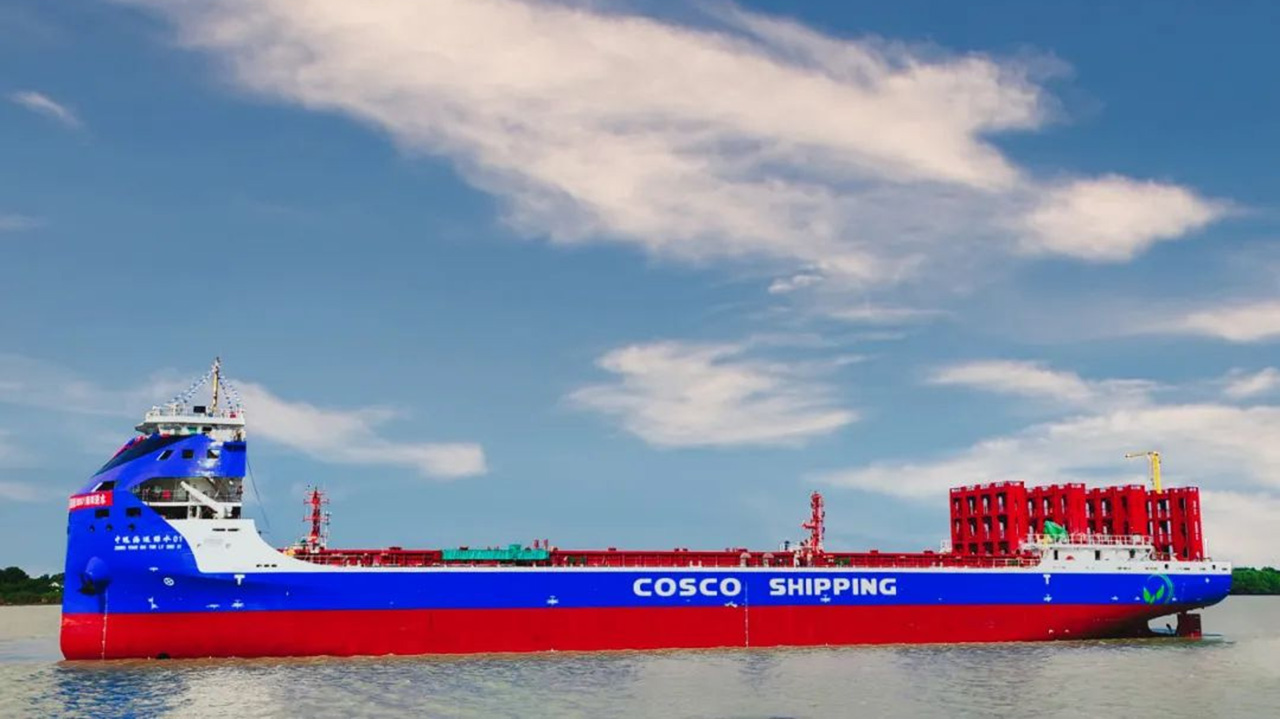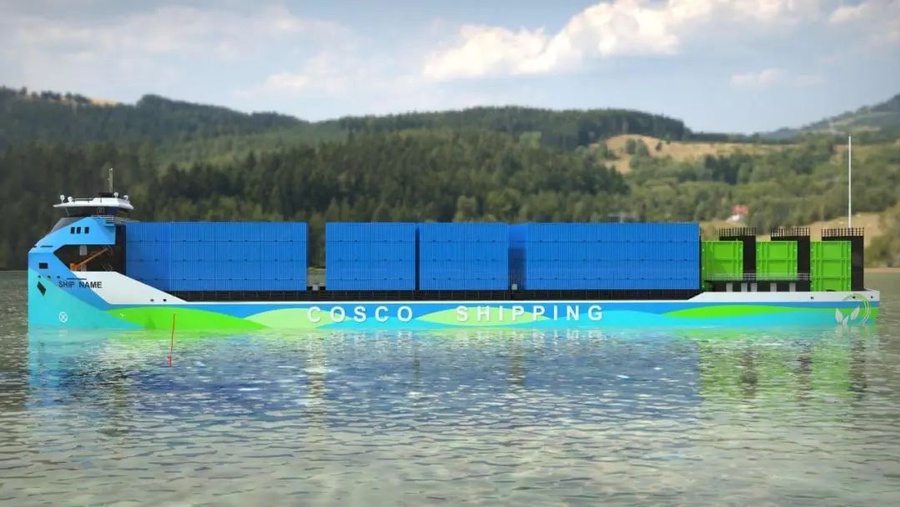The electric ship’s route follows 965 kilometres of the famous Yangtze River. The vessel is the first of two intended for the route and is powered by two 900 kW main propulsion engines.
The ship’s battery-swapping system en route solves range anxiety. The Maritime Executive, says that 36 of the ship’s 700-container capacity are taken up with batteries as swappable units. The ship’s operator, Cosco Shipping Heavy Industry, revealed at the project presentation last year that each swappable battery unit is housed in 20-foot containers with a capacity of 50,000 kWh.
The ship has a length of 120 meters, a width of about 24 meters and weighs 10,000 tons. As the name says, the ship’s cargo capacity is 700 TEUs, with one TEU corresponding to a standard 20-foot container.
The clean freighter uses an intelligent control system that ensures maximum efficiency and, for example, precisely matches energy consumption to the ship’s needs. The speed of the container ship depends on the planned arrival time, currents and remaining battery capacity.
In March, when the ship was first announced, Cosco said the 700 TEU electric container ship is the world’s first large all-battery container ship for long-distance transport. The ship was deigned to “realize the environmentally friendly upgrading of the golden waterway and provide the experience and solutions of central state-owned enterprises for China’s inland and coastal shipping industry to reduce emissions.”
The Chinese government sees the Yangtze River Economic Belt as an important project for China to promote green development. In April last year, the ‘Yangtze River Three Gorges 1’ – said to be the largest electric cruise ship in the world – started its maiden voyage in Yichang in Hubei province. Officials at the launch said that Yichang is striving to become a clean energy capital and should help serve the green development of the Yangtze River Economic Belt.
This resonates with statements from Cosco, saying the Yangtze River project will serve as a model for future environmentally friendly shipping projects. The company began constructing the second electric container ship in May this year.
Source: The Maritime Executive


